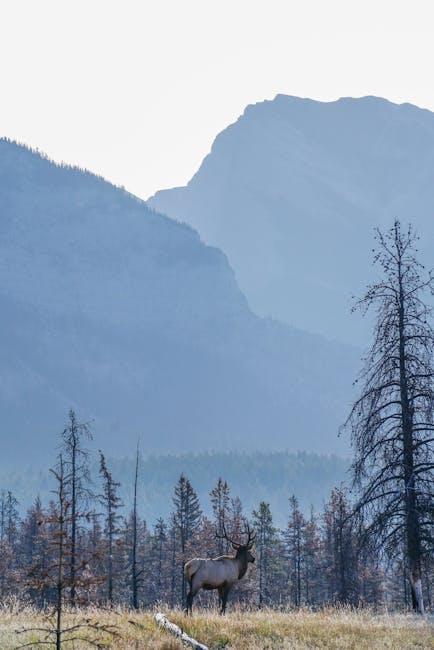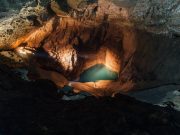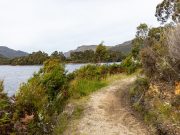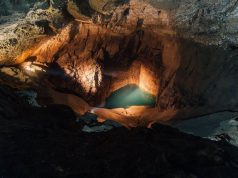Amidst the vast and diverse landscapes of Africa, where the golden savannas meet dense rainforests and arid deserts, lies a treasure trove of biodiversity unparalleled anywhere else on Earth. These national parks, often described as the last bastions of the wild, are sanctuaries not only for the majestic big five but also for countless lesser-known species that play crucial roles in their ecosystems. Yet, beneath the breathtaking beauty of these natural wonders lies a narrative of struggle and resilience. This article delves into the multifaceted conservation efforts taking place across Africa’s national parks—endeavors that blend age-old wisdom with cutting-edge science, community engagement with global partnerships, and the timeless allure of nature with the pressing demands of modernity. Join us as we explore the intricate tapestry of initiatives designed to preserve these irreplaceable ecosystems for future generations, while addressing the challenges that threaten their very existence.
Guardians of the Wild: Innovative Strategies in African Conservation
In the heart of Africa’s national parks, a blend of traditional wisdom and modern technology is shaping the future of conservation. Innovative approaches are being employed to safeguard the continent’s rich biodiversity. From drones that monitor vast landscapes to community-based conservation programs that empower local populations, these strategies are as diverse as the ecosystems they aim to protect. The integration of artificial intelligence helps track wildlife movements and detect poaching threats, allowing rangers to act swiftly and efficiently.
- Collaborative partnerships with indigenous communities ensure that conservation efforts are culturally sensitive and sustainable.
- Eco-tourism initiatives provide economic incentives for conservation, encouraging both locals and visitors to value and protect natural habitats.
- Rewilding projects aim to restore ecosystems by reintroducing native species, balancing the delicate interplay of flora and fauna.
By harnessing these innovative strategies, Africa’s national parks are not only preserving their wildlife but also fostering a renewed connection between people and nature, setting a global example for conservation success.
Community and Conservation: Empowering Local Voices in Park Management
In recent years, Africa’s national parks have witnessed a paradigm shift towards more inclusive management strategies that amplify the voices of local communities. These strategies recognize that local knowledge and cultural heritage are invaluable assets in the conservation process. By involving indigenous communities in decision-making, these initiatives not only foster a sense of ownership but also enhance the effectiveness of conservation efforts. This collaboration helps to bridge the gap between traditional ecological wisdom and modern conservation science, creating a more sustainable model for park management.
- Empowering local communities: By providing training and resources, communities are equipped to play an active role in safeguarding their natural heritage.
- Cultural preservation: Integrating traditional practices and beliefs into park management helps maintain cultural identity and promotes biodiversity.
- Economic incentives: Initiatives that generate income for local residents through eco-tourism and sustainable resource use encourage the protection of natural resources.
These efforts highlight a growing recognition that conservation is not just about protecting landscapes and wildlife, but also about nurturing the people who call these places home. By ensuring that local voices are heard and respected, Africa’s national parks are setting a precedent for a more inclusive and effective approach to conservation.

Preserving Biodiversity: Success Stories from Africas National Parks
In the heart of Africa, national parks stand as beacons of hope for the planet’s rich biodiversity. These protected areas have become the stage for some of the most inspiring conservation success stories. Through a combination of community involvement, innovative technologies, and sustainable practices, Africa’s national parks have not only preserved wildlife but have also revitalized entire ecosystems. Gorongosa National Park in Mozambique is a prime example, where a once-devastated landscape has been transformed into a thriving haven for elephants, lions, and a myriad of other species. Similarly, Virunga National Park in the Democratic Republic of the Congo has seen a resurgence in its mountain gorilla population thanks to dedicated ranger efforts and global partnerships.
- Community Engagement: Local communities are increasingly involved in conservation efforts, providing them with both employment and a stake in preserving their natural heritage.
- Technological Advancements: Drones and GPS tracking are used to monitor wildlife and prevent poaching, offering a modern twist to age-old conservation methods.
- Sustainable Tourism: Initiatives like eco-friendly lodges and guided wildlife tours contribute to both local economies and conservation funding.
These success stories highlight the potential of Africa’s national parks to serve as models for conservation worldwide, emphasizing the critical balance between human activity and natural preservation.

Future-Proofing Nature: Recommendations for Sustainable Conservation Practices
In the heart of Africa’s sprawling national parks, a dynamic shift towards sustainable conservation practices is emerging, driven by the need to safeguard biodiversity while supporting local communities. Embracing innovative strategies is essential to ensure these natural sanctuaries thrive for generations to come. Key recommendations for fostering resilient ecosystems include:
- Community Engagement: Encouraging local participation in conservation efforts is crucial. By involving indigenous communities, we can harness traditional knowledge and foster a sense of ownership and responsibility towards the environment.
- Ecotourism Development: Designing eco-friendly tourism initiatives not only generates revenue but also raises awareness about the importance of preserving natural habitats. Promoting responsible tourism practices helps balance economic growth with environmental protection.
- Technology Integration: Leveraging advanced technologies such as satellite monitoring and AI-driven analytics can enhance wildlife protection and track ecological changes. This data-driven approach enables more effective management of conservation areas.
- Cross-Border Collaboration: Strengthening partnerships among neighboring countries can lead to more cohesive strategies for managing transboundary ecosystems. Joint efforts in policy-making and resource allocation ensure a unified approach to conservation challenges.
By adopting these strategies, Africa’s national parks can not only preserve their rich biodiversity but also contribute to the socio-economic development of the region, ensuring a harmonious coexistence between humans and nature.
Closing Remarks
As the sun dips below the horizon, casting a golden glow over Africa’s sprawling savannahs and lush forests, the story of conservation in its national parks continues to unfold. These protected areas stand as both guardians of nature’s wonders and beacons of hope for a sustainable future. Through the dedicated efforts of local communities, international organizations, and passionate individuals, the intricate tapestry of life within these parks is being preserved for generations to come.
The journey is far from over. Challenges persist, requiring innovative solutions and unwavering commitment. Yet, the progress made thus far serves as a testament to what can be achieved when humanity chooses to honor its role as steward of the Earth. As we leave behind the rustling leaves and distant calls of the wild, let us carry forward the spirit of conservation, ensuring that Africa’s national parks remain vibrant sanctuaries where nature thrives and inspires.
































